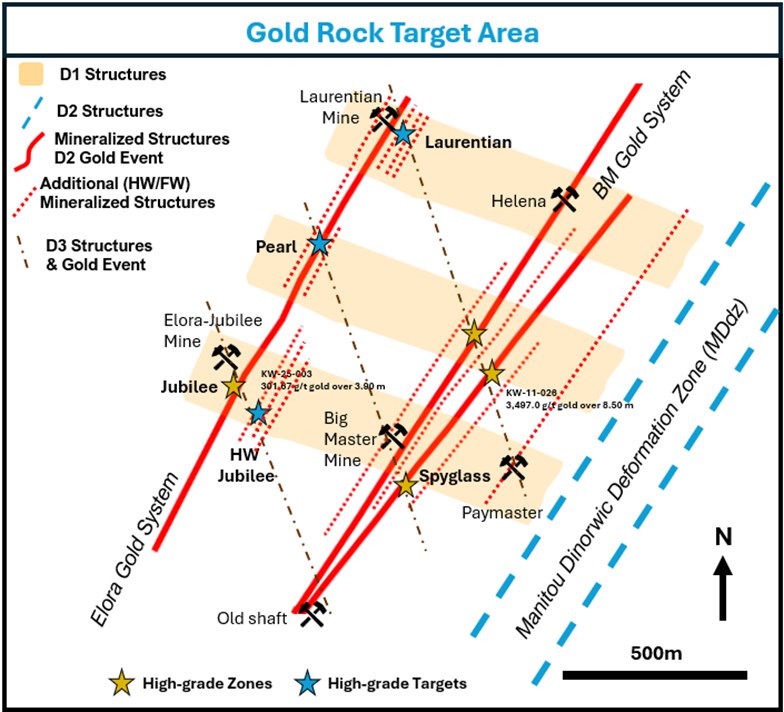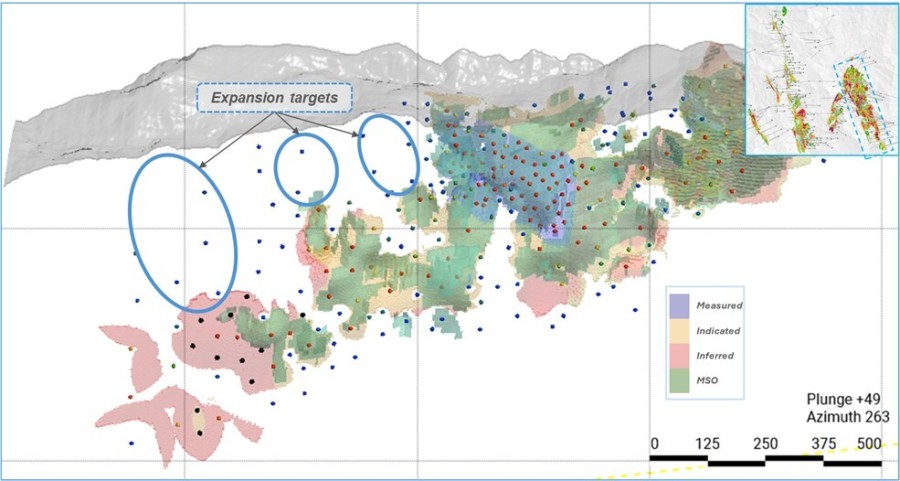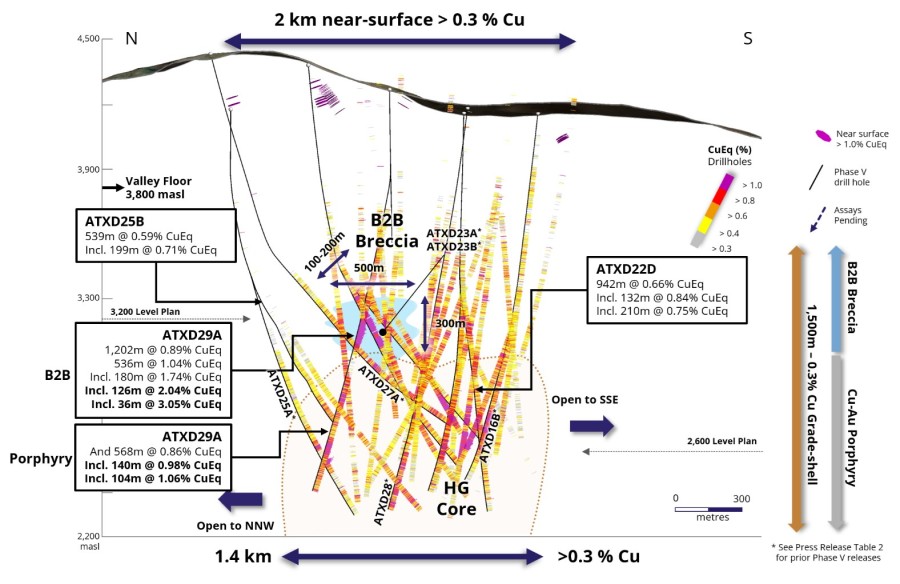LONDON, Dec. 7, 2017 /CNW/ - Meridian Mining SE (TSX V: MNO) ("Meridian" or the "Company") today released findings of its maiden Resource and Preliminary economic assessment for the Bom Futuro tailings project, in the state of Rondônia, in NW Brazil.
The Bom Futuro tin mine has produced 195,000 tonnes of tin over a thirty-year history of continuous operation since its discovery in 1987. Meridian entered a joint venture with the project owners - Coopersanta - in late 20161. The initial priority has been to evaluate opportunities to recover tin from the several million cubic meters of tailings which have accumulated around the Bom Futuro Hill. The appreciation of the tin price in recent years has created a more favourable climate for assessing retreatment scenarios. The Company engaged independent specialists H&S Consultants ("H&SC"; world experts servicing the global mining industry for 30 years) to undertake a resource estimation following a site visit completed in September 2017. The drilling and interpretation has now enabled a maiden resource estimate and a positive preliminary economic assessment.
HIGHLIGHTS
- Bom Futuro drilling program defines significant maiden resource inventory:
- Indicated Resources: 3.3Mt @ 626ppm tin ("Sn") for 2,076 tonnes ("t") of Sn.
- Inferred Resources: 57.9Mt @ 526 ppm Sn for 30,447t of Sn
- Several metallurgical testwork studies were conducted:
- Preliminary testwork was conducted at São Paulo University laboratories, SGS-Geosol and INBRAS (equipment supplier).
- Further testwork was conducted at Met-Solve Canada and Mineral Technologies Australia.
- A process flowsheet combining gravitic and magnetic separation methodologies was designed to achieve a 60% Sn concentrate, with 60% metallurgical recovery.
- An engineering study was completed for the PEA preparation, which indicates:
- Plant feed rate of 3.8Mt per year for production of 31,925 t of concentrate over a mine life of 16 years.
- Capex of US$28.3m, including US$3m in contingencies.
- After-tax NPV of $50.2m at 10% discount rate, IRR of 39.8% (Sn metal price at US$20,500 per tonne).
- Targets for further resource additions exist with extensional and infill drilling of the tailings basins, and exploration of the newly allocated palaeochannel sequence.
- The Company will file a technical report in connection with the mineral resource estimate and the PEA within 45 days in accordance with National Instrument 43-101.
1 Details of the agreement are summarised in the Company's announcements of Dec. 19, 2016; March 16, 2017.
-
"The results of our resource studies and economic evaluation of the Bom Futuro tailings support the potential of this project to deliver a long-life operation," said Anthony Julien, President and CEO of Meridian. "Further opportunities exist at Bom Futuro to enhance the value of the project with exploration programs on the newly allocated areas, including extensions to the paleochannel systems which have contributed significantly to past production. As work on the tailings consolidates, we will be able to focus attention more on targeting extensions to the Bom Futuro corridor in the broader exploration area. Our programs will be paused over the wet season as we plan for the next phase of evaluation. These results exceeded our expectations and encourage us to advance our activities with Coopersanta".
MERIDIAN TAILINGS RESOURCE EVALUATION PROGRAM
Meridian has been allocated tailings basins under a mining services agreement with our joint venture partners Coopersanta, covering an area of 1,261 ha (Fig 1). The resource study incorporates the results of 252 percussion holes completed for 2,854.3m and 437 auger holes completed for 1504.1m.
The resource estimates for the Bom Futuro tin tailings project were prepared by Simon Tear, a qualified independent geologist of H&S Consultants Pty Ltd. Estimation utilized a mixture of Ordinary Kriging ("OK") and Inverse Distance Squared ("ID2") grade interpolation methods. Grade top-cuts were applied of 1,500ppm Sn in the Jacaré Leste area and of 1,700ppm Sn in the NE tailings group (EBESA, Gilberto, Mutum, Carlinhos). Models incorporated 854 density data measured on site. Grade interpolation was made using a series of expanding search passes (refer to notes). Ordinary Kriging techniques were used for resource estimates at Jacaré Leste, Santa Cruz, Jacaré Inferior (JI), and the NE tailings group. The ID2 technique was used at Santa Cruz Central, LC75 and LC80, based on the spacing and amount of the available drilling data. A summary of the resource estimates for tailings at the Bom Futuro Tin Project is summarized in Table 1, quoted at a 200ppm cut-off grade.
Table 1: Bom Futuro Tailings Mineral Resource Estimates by Area.
|
Category |
Area |
Mtonnes |
Tin ppm |
Tin Tonnes |
Density t/m3 |
|
Indicated |
NE Area |
1.9 |
523 |
967 |
1.68 |
|
St Cruz Cent |
0.3 |
796 |
217 |
1.71 |
|
|
St Cruz LC75 |
0.5 |
873 |
436 |
1.66 |
|
|
St Cruz LC80 |
0.6 |
712 |
456 |
1.61 |
|
|
Indicated |
Total |
3.3 |
629 |
2,076 |
1.67 |
|
Inferred |
Jacaré Leste |
20.3 |
584 |
11,863 |
1.63 |
|
NE Area |
23.9 |
509 |
12,173 |
1.55 |
|
|
St Cruz - JI |
8.8 |
349 |
3,071 |
1.5 |
|
|
St Cruz Cent |
0.7 |
767 |
539 |
1.7 |
|
|
St Cruz LC75 |
0.4 |
800 |
309 |
1.61 |
|
|
St Cruz LC80 |
3.8 |
694 |
2,654 |
1.61 |
|
|
Inferred |
Total |
57.9 |
526 |
30,447 |
1.57 |
Top-cut values are used for the resource.
EXPLORATION TARGET
The tailings have been deposited on an incised topographic surface. Drilling has been conducted nominally on a 100 x 100m grid for auger drilling and a 200 x 200m grid for percussion drilling. The deeper areas of the tailings pile have not always been intersected in this drill pattern. They will require further targeted drilling to fully quantify the amount of tin present. Some portions of some tailings basins have also been inaccessible due to surface water. Where sufficient data has not available to meet Inferred Resource classification criteria, the available drilling information and relief models have been used to support the nomination of an "Exploration Target". Table 2 details a summary of the Exploration Potential for the Bom Futuro Tin Project, suggesting the possibility of an additional 20 to 30Mt of tailings at a grade of 400 to 450ppm Sn, requiring drill confirmation. The potential quantity and grade is conceptual in nature and there has been insufficient exploration to yet define a Mineral Resource for this material. It is uncertain if further exploration will result in the determination of a Mineral Resource.
A significant portion of the Exploration Target tonnage is located in the large Mutum and Jacaré Inferior basins which contain palaeovalley rejects. Tailings from primary bedrock ore sources such as Jacaré Leste are anticipated to have higher grades. A program of infill drilling targeting unclassified areas commenced prior to the wet season closure. The Company is also evaluating barge-based drilling platforms that may allow access to areas with surface water for future resource definition.
Table 2: Bom Futuro Exploration Targets Tonnage and Grade Ranges by Area
|
Area |
Tonnage Range |
Tin Grade Range |
|
Jacaré Leste |
3 to 4Mt |
580 to 660ppm |
|
NE Area |
11 to 17Mt |
400 to 450ppm |
|
St Cruz - JI |
5.5 to 7.5Mt |
340 to 420ppm |
|
St Cruz Central |
0.2 to 0.3Mt |
650 to 750ppm |
|
St Cruz LC80 |
0.1 to 0.2Mt |
750 to 850ppm |
|
Total |
20 to 30Mt |
400 to 500ppm |
Exploration targets are in addition to the resource estimate; there is no overlap.
Metallurgical Testwork
Preliminary testwork was conducted in São Paulo University, SGS-Geosol and INBRAS (equipment supplier) Laboratories based in Brazil. These test works were designed for a first evaluation of the suitability of the resources to gravitic processes such as spirals and centrifugal concentrators, shaking tables and magnetic separation.
For further studies, samples from the main areas were collected, and 9 tons of material were sent to SGS-Geosol facilities in Brazil, where a grain size distribution study of the ROM was carried out with wet sieving.
The coarse material (over 1mm) was preconcentrated through jig separation and then grinded to below 1mm. Combined below 1mm samples were prepared and sent to Mineral Technologies laboratory in Australia and Met-Solve laboratory in Canada, according to the proportion observed at the size distribution analysis. Further gravitic and magnetic separation test works were conducted in both laboratories.
A process flowsheet was designed based on the test results, with the following stages:
- Separation of the coarse material with further jigging and grinding of the concentrate to below 1mm;
- Gravitic separation using spiral concentration in rougher and cleaner stages;
- Grinding of the tailings to below 0.1mm and separation using centrifugal concentrators;
- Low and high intensity separation of the combined concentrates;
- Final upgrade of the material at shaking tables and air separation.
Mineral Reserves
At this stage of the project no mineral reserves were estimated.
Engineering Study
With the testwork results, Kuttner do Brasil Ltda, an EPC company was contracted to develop process and plant basic engineering with necessary equipment for this plant, including CAPEX and OPEX estimates to enable a return on investment calculation.
The mine operation was designed for basic excavation and truck hauling for the initial 3 years, and an investment in a dredging system planned for the third year, to resume operation in year 4. A preliminary study for the tailings management was conducted and identified areas for the tailings disposal. Initially one specific area identified requires no capital to be allocated. Additional sustaining capital was considered for tailings area preparation.
The plant was designed for 3.8 million tonnes per year feed rate, estimating a production averaging 2,000 tonnes of 60% Sn concentrate per year. A basic mine schedule was prepared, with production varying according to the feed grade at the plant throughout the mine life.
A CAPEX of US$28.3 million was estimated, including:
|
- US$13.0m |
Other estimates and assumptions for the economic evaluation are as follows:
- Tin prices assumed as US$20,500 per t (in line with the last 12 months average);
- Operating costs of US$ 7.7m (based on the engineering study);
- US inflation of 2% (estimated CPI) for prices and costs;
- Production of a 60% Sn concentrate, with 60% metallurgical recovery at the plant
The main indicators achieved are as follows:
- After-tax NPV of US$50.2m at 10% discount rate
- After-tax NPV multiple of 1.8 to CAPEX
- After-tax IRR of 39.8%
- Payback in 2.3 years
The PEA is preliminary in nature and includes Inferred Mineral Resources which are considered too speculative geologically to have the economic considerations applied to them that would enable them to be categorized as Mineral Reserves. Therefore, there is no certainty that the PEA will be realized.
FORWARD PROGRAM
The Mineral Resource and Exploration Target tables do not yet include estimates for material in the recently allocated Carlinhos South and Grota Rica tailings basins, or along the southern palaeovalley trend (Figure 1). Drilling has commenced in these areas with some results received from ALS Laboratories following the mid-November cut-off date for the resource database. Future work will be targeted at testing the resource potential of these areas, and extending drill coverage in the existing basins to upgrade the resource classification.
The Carlinhos South tailings cover an area of 13 hectares to the south of the Bom Futuro Hill. Results reported to date show a grade range consistent with rejects from primary ore sources at Bom Futuro:
|
|
|||
The Grota Rica tailings cover an area of 100 hectares to the north of the Bom Futuro Hill. A channel sampling and drilling program also commenced over this broad area. Nine holes have been drilled with a tailings depth range of 3 to 16.5m. Results are pending.
A priority target for ongoing exploration at Bom Futuro is the recently allocated southern palaeochannel trend. Mining of the Bom Futuro palaeochannels commenced in 1991, with activity peaking on the southern channel system from 2006 to 2012. The extensions of the southern channel system have never been drilled and provide a broad exploration footprint. The unconsolidated palaeochannel material is considered to offer synergies with tailings retreatment scenarios under evaluation. Scout drilling confirms the sedimentary package persists at least 100m beyond the mining front, with assays pending (Figure 2). A dedicated drill campaign is required to test both this area and the regional palaeochannel targets defined in the broader licence area.
QUALIFIED PERSON
The technical information about the Company's exploration activities has been has been prepared under the supervision of and verified by Dr Adrian McArthur (B.Sc. Hons, PhD. FAusIMM), the Chief Geologist of Meridian Mining, who is a "Qualified Person" within the meaning of National Instrument 43-101.
The Resources Estimates and Exploration Targets have been provided by Mr Simon Tear of H&S Consulting Pty Ltd BSc Hons (Mining Geology), P.Geo (Institute Of Geologists of Ireland 17), EurGeol (26) who is an independent "Qualified Person" within the meaning of National Instrument 43-101. Mr Simon Tear reviewed and approved their inclusion in the contents of this release.
All the other sections of the Preliminary Economic Assessment report have been prepared under the supervision of Dr Homero Delboni Jr (B.E., M.Eng.Sc., PhD, MAusIMM Chartered Professional - CP Metallurgy), who is an independent "Qualified Person" within the meaning of National Instrument 43-101. Dr Homero Delboni Jr reviewed and approved their inclusion in the contents of this release.
ABOUT MERIDIAN
Meridian Mining SE is focused on the acquisition, exploration, development and mining activities in Brazil. The Company is currently focused on exploring and developing the Espigão manganese project, the Bom Futuro tin JV area, and adjacent areas in the state of Rondônia. The Company employs a two-pronged strategy with the objective of growing pilot production while advancing a parallel multi-commodity regional exploration program. Meridian is currently producing high grade manganese at its project located at Espigão do Oeste.






